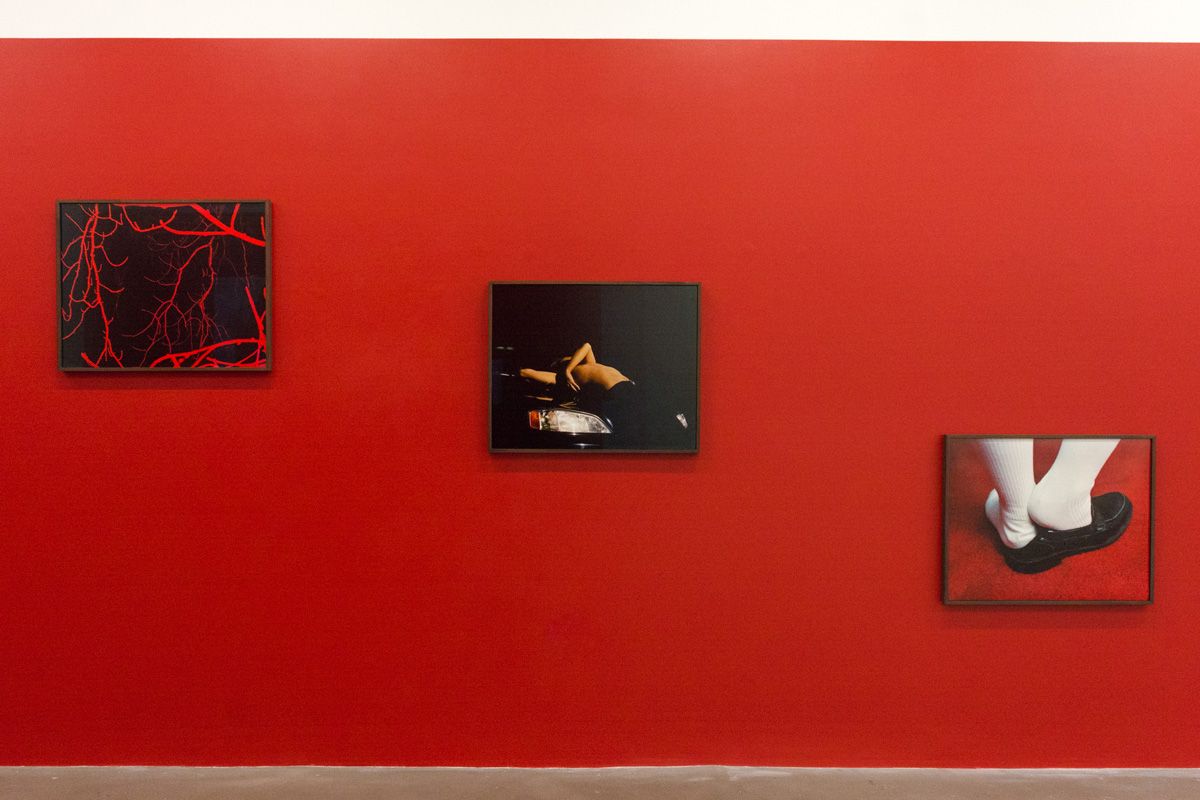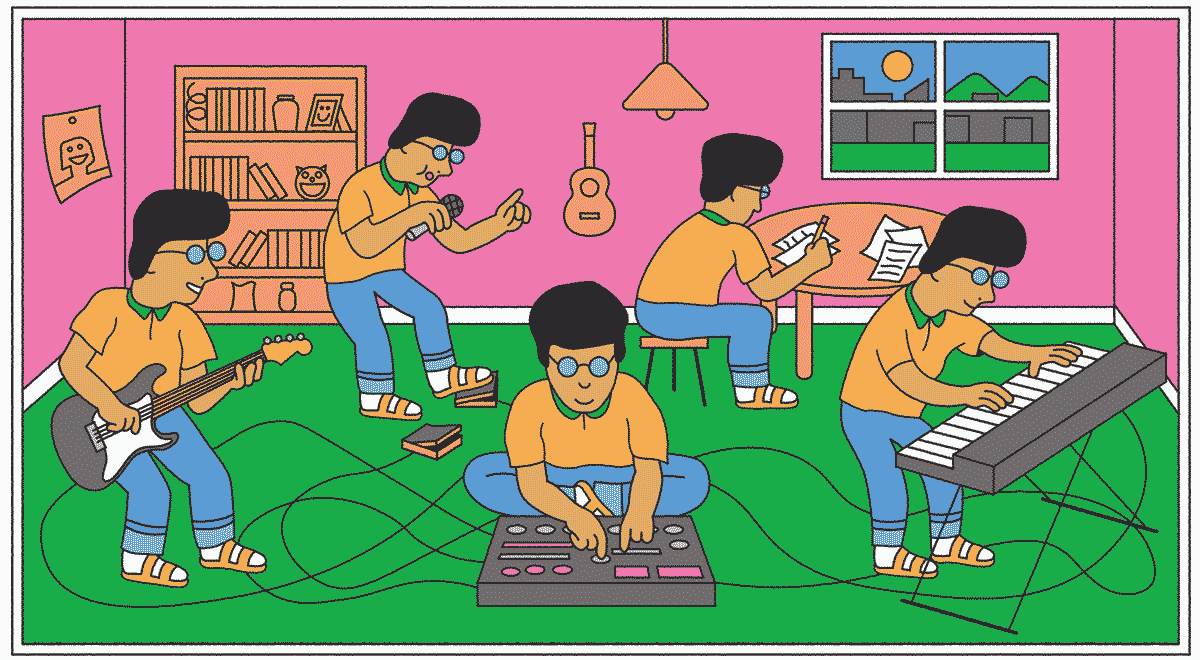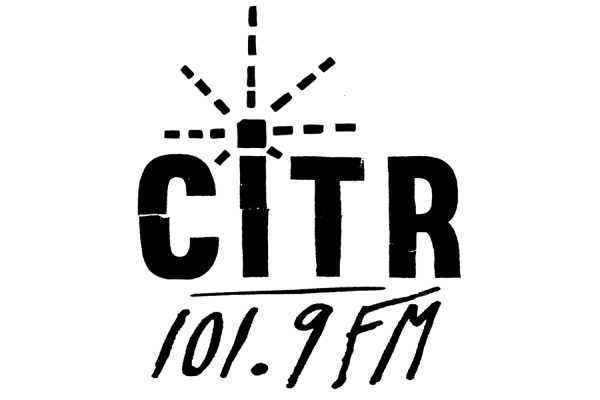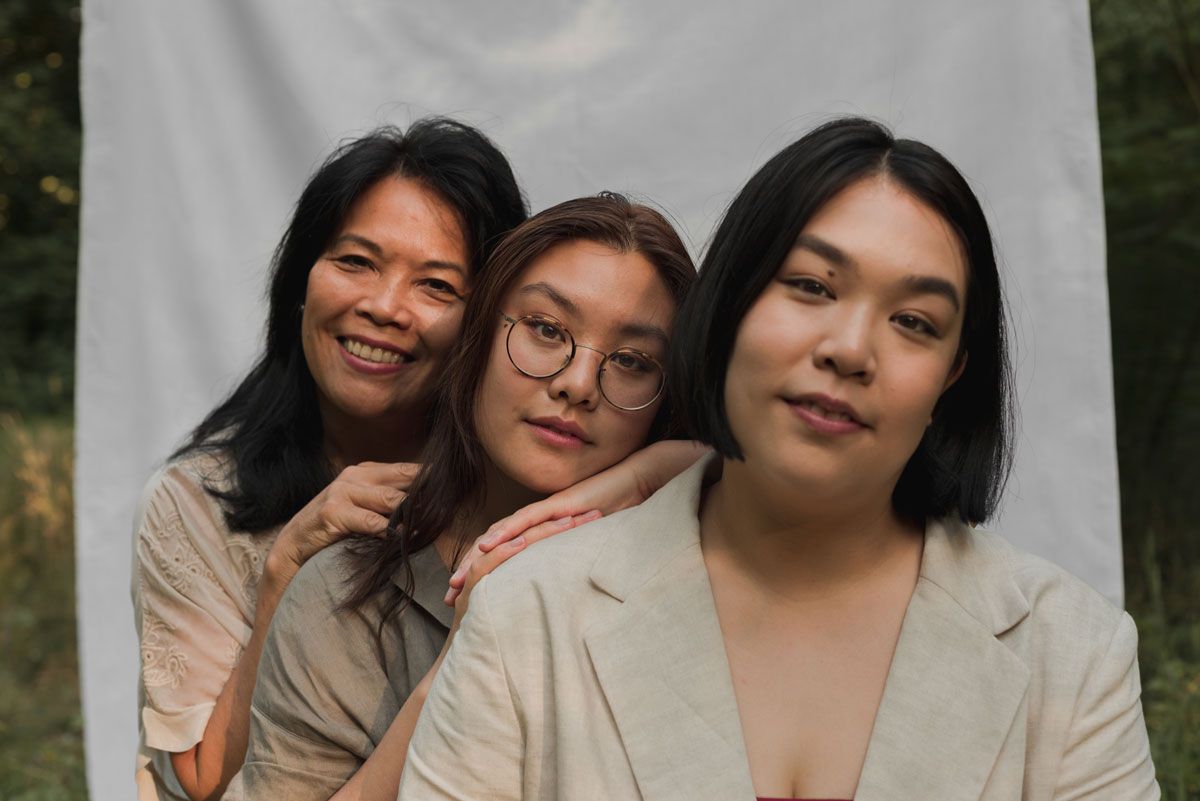Pre-reading:
The Context of a Filipino Home that is not in the Philippines (based entirely off my own experience)
You are greeted with warm smells of fresh rice cooking, canola oil heating, or the distinct smell of a pamunas (cleaning cloth) wiping up post-meal. Before walking into the home, you must put on a pair of tsinelas — slippers or flip flops worn inside the house. There is a selection at the door with varying colours, sizes, quality — you can tell some are obvious favourites based on how they are worn out. A pair is completed when accompanied with the distinct clicking noise of heels meeting the tsinelas. Above the door is a krusipiho (crucifix), above the table is The Last Supper, and around the table are voices saying grace. Reminders that this is a home of Catholics, and a sign that colonialism digs deep into culture. Sounds of TFC (The Filipino Channel) ring loudly from the living room, maybe a telesarye, Filipino television dramas, a game show, or the news. This smells like home. This looks like home. This sounds like home. An attempt to reconcile the distance from the Philippines, a desire to be connected, even among the disconnection that layers of colonization has put among your people.
+++
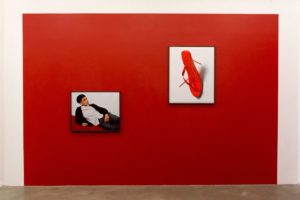
Coming-of-age stories often capture teenagers with their arms in the air, a fight in breaking away from a piece of childhood, and a six-minute indie song. In the exhibit, New Ending, Rydel Cerezo pierces through the tropes of coming-of-age and reintroduces viewers into the idea that coming of age isn’t a door, but rather a cyclical journey we are continually entering. Demonstrating that coming of age involves failure and unbelonging, and through those experiences which we will continually have, we come to terms with what is possible for ourselves. Viewers are invited to reimagine what coming-of-age can look like when it is no longer reserved for teenagers.
As a queer, Filipino photographer, Cerezo explores the various aspects of his own identity and how they all come together in moments of coming-of-age. Catholicism, queerness, and Filipino culture all tangle in the series of six photos in this exhibition. The red walls that hold the photos immediately greet the viewer into feelings of drama, sacredness, and intensity — hinting to feelings drawn from telesarye’s, the Catholic church, and coming of age. Cerezo’s exploration of his own identity, involving layers of sexuality, culture, religion, and colonial mentality, demonstrates that coming-of-age often doesn’t play out the way the tropes do when these aspects are involved. These layers add complications that return us to these coming of age moments over and over and over again.
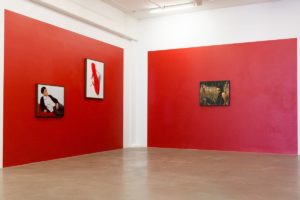
Among intersections of religion, queerness, and culture, one aspect of identity does not exist without the other. Cerezo captures the overlap of his own experience with Filipino culture, Catholicism, and queerness, all showing up in one of the pieces which captures a single red tsinelas being pierced (or crucified) with red nails — one in the center, and the other in the heel. The shoe itself holds significance to the Filipino culture, but seeing it damaged, therefore unusable, depicts deviance. The unbelonging and failure that Cerezo suggests is what coming of age is all about. The image of the piercing nail is a striking symbol pointing to crucifixion — a major characteristic in Catholicism. One so deeply recognizable that returns in Catholic texts, images, and spaces over and over again. The brutality of this image coincides with the brutality of coming of age — and how we can recognize this over and over again. The nails reshape the tsinelas into a high heel, displaying an image of queerness. Stepping away from traditional ideas of masculinity and femininity, and re-imagining ourselves outside of the heteronormative and colonial systems so deeply engrained. The image depicts pain, discomfort, and reimagining — the coming of age story Cerezo explores and shares with viewers.
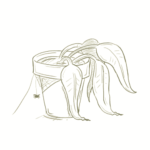
The collection of photos in this exhibition bring together themes of Catholicism, queerness, and Filipino culture in a recognizable yet contemporary way. Cerezo presents symbols within these themes yet reimagines them in new forms, demonstrating an attempt to reconcile with aspects of identity while still making it feel personal. There are symbols within Filipino culture that connect so deeply to home but when your full identity does not exist in the culture, you have to imagine it yourself. Viewers witness Cerezo’s exploration of his own flows of belonging and unbelonging and discovery of failure and possibilities. Through his own vulnerability viewers can make sense of their own coming of age stories — the discomfort, the failure, the moments of unbelonging, the reimagining, the possibilities — and how they occur over and over and over again.


